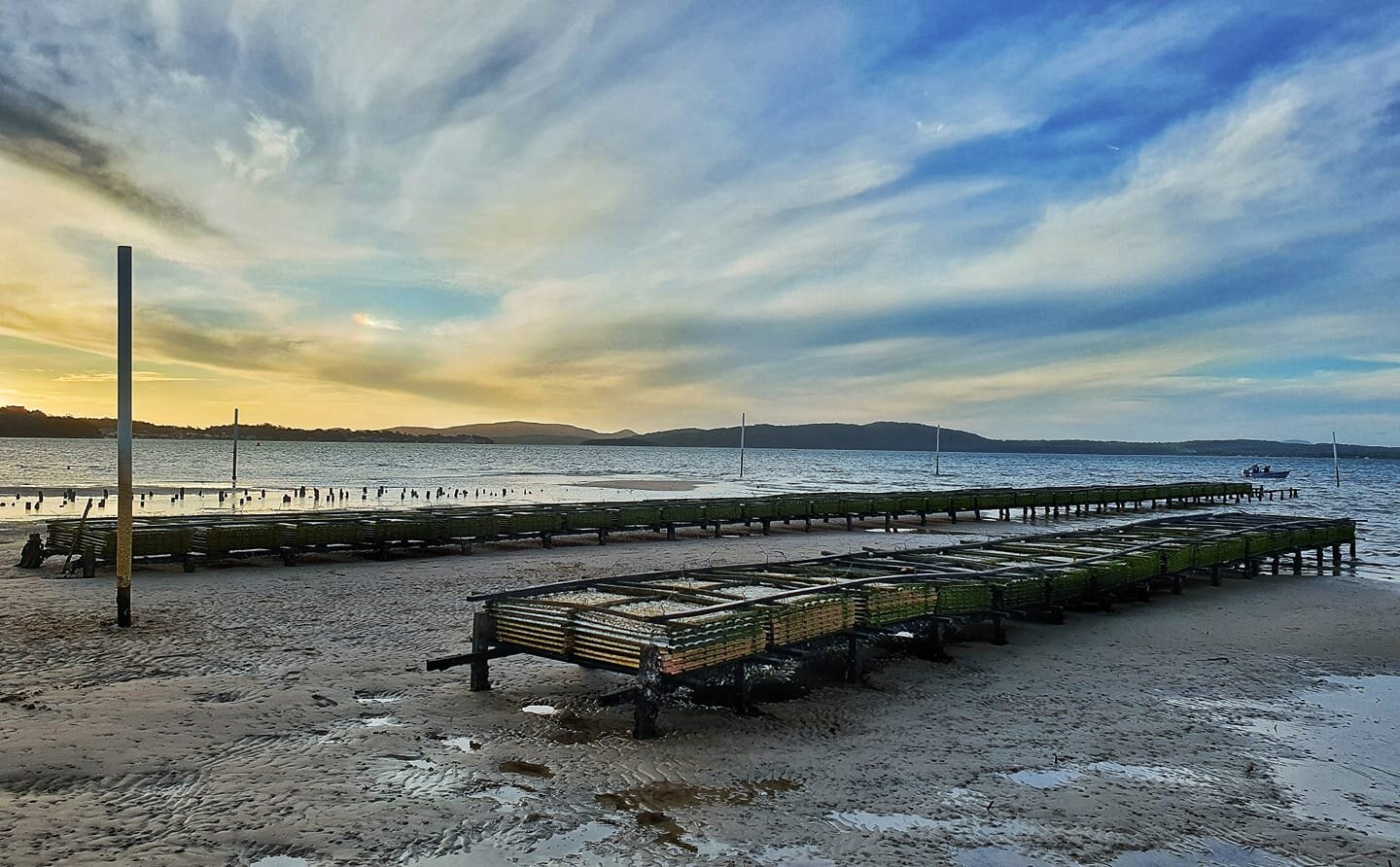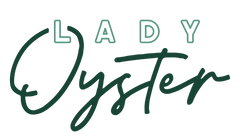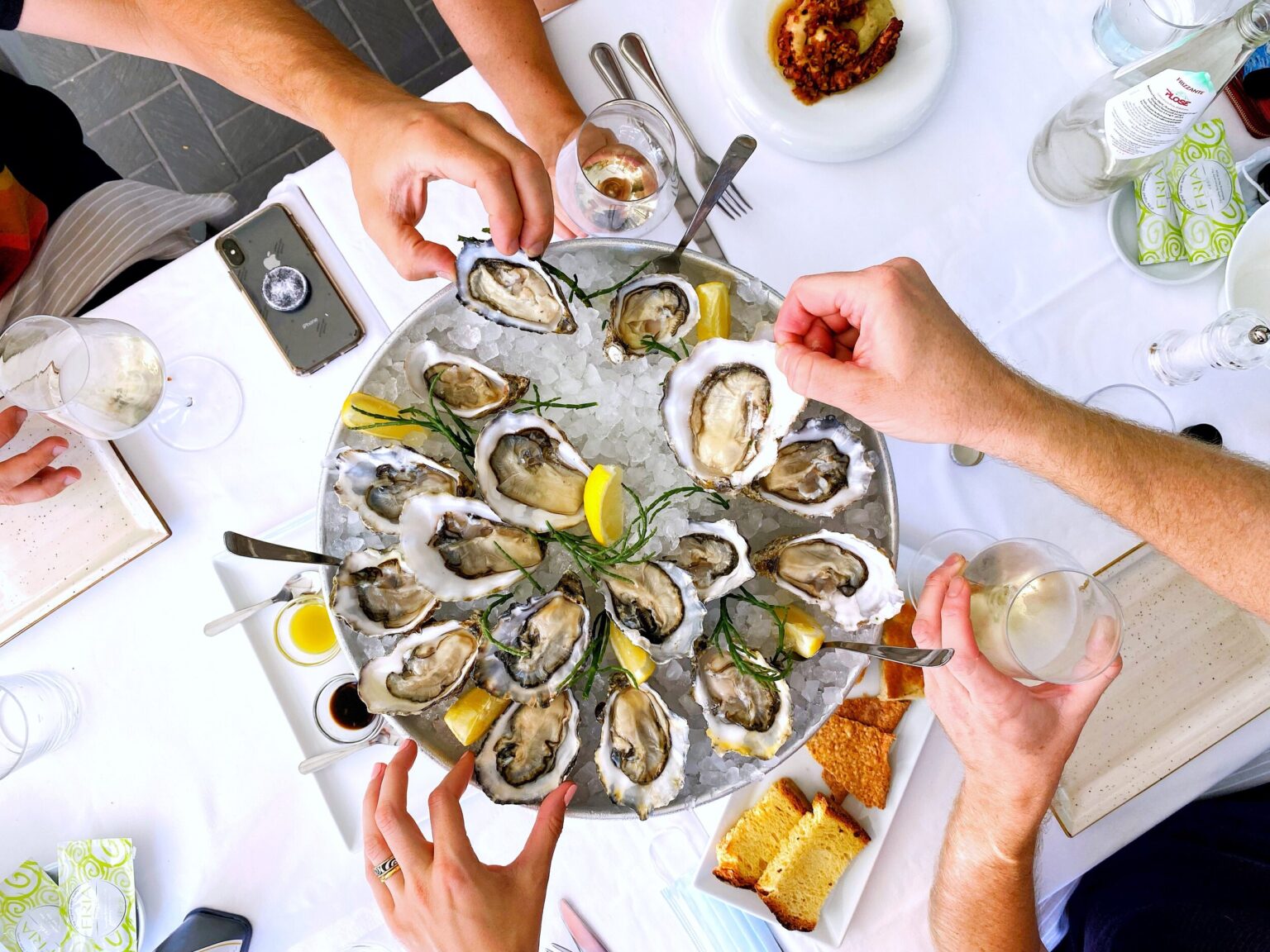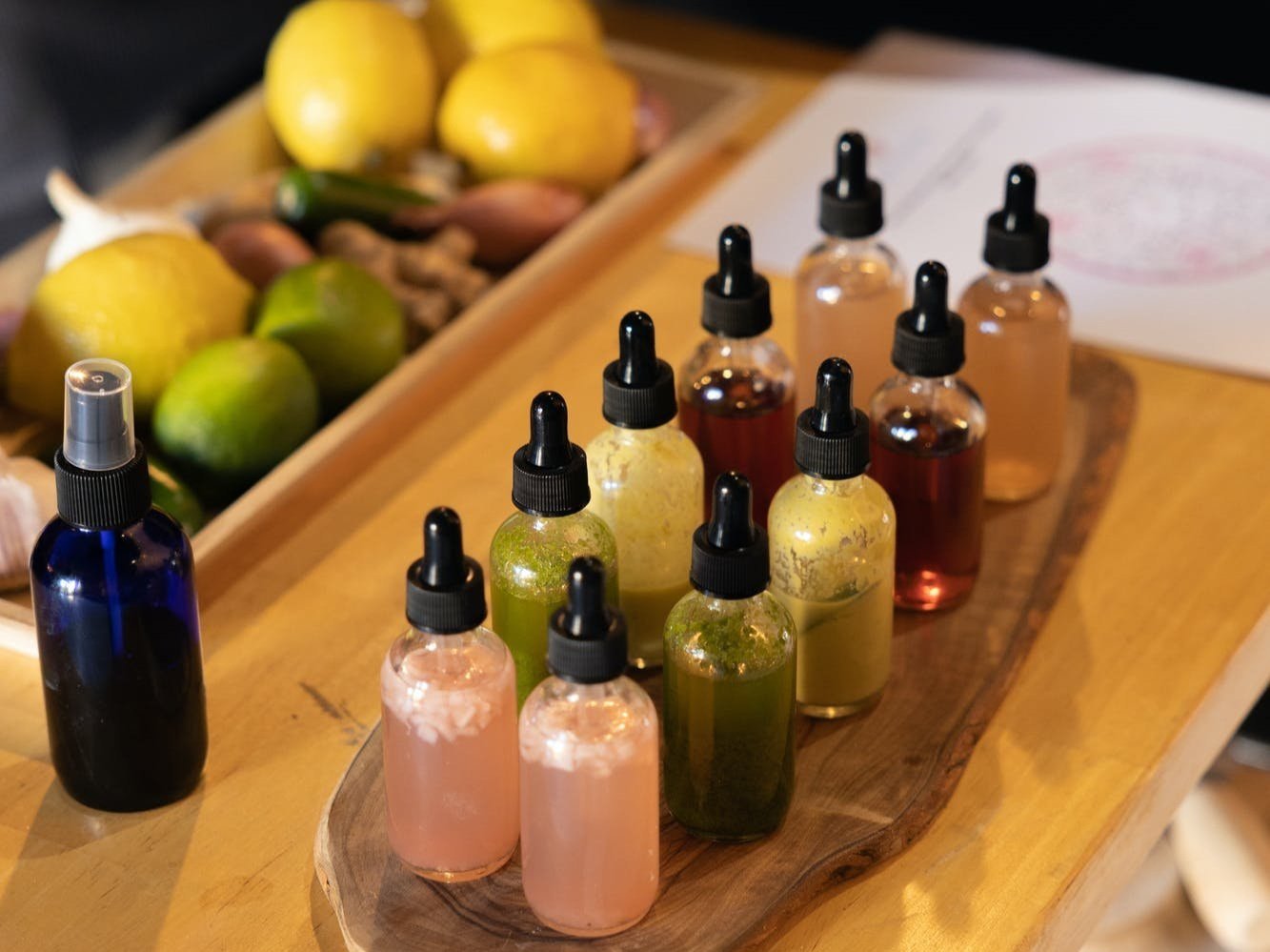Stella Maris Oyster Co.: The Stars of the Sea in Port Stephens, Australia

In this farm feature, we’re traveling across the world and down under for a story about a family who did just the same. Guilherme Y. Barbosa, a Brazilian Native, also known as “Caju”, and his family are the founders of Stella Maris Oyster Company, a world-class oyster farm in Port Stephens, Australia.
Caju shares his adventurous journey of leaving Brazil and landing in Australia… then staying for the oysters. This story is especially dear to my heart, as my husband’s family lives just a couple hours south of Port Stephens in Sydney. I absolutely love and appreciate New South Wales’ glittering coastlines, abundant biodiversity, and contagious culture. You’ll also appreciate Caju’s eloquent expression and admiration for the oysters in his care. Here is the story of Stella Maris Oysters.
VIRGINIA: “Stella Maris”. can you share where the name came from, and how it all started?
CAJU: Stella Maris, “Star of the Sea,” was a work boat launched in 1934, and became an icon of the oyster industry in Port Stephens. She represents tradition, hard work and glorious times – a Motto that we carry deep in our hearts.
Our Logo features the Star Sirius, the Sea and a rope circle, which is full of symbolism and represents who we are, what we believe, and our commitment.
My name is Guilherme Y. Barbosa, and Guilherme means William, but believe it or not, I’m known as Caju (Cashew) . I have a degree in Biology, which was left aside for a few years after working in the Brazilian Department of Fishery. After becoming a Sales Director and later a Photography Director, I became a professional Sailor and left aboard a Catamaran for 3 years. The call from the sea was always alive in my heart.
In 2017, I moved from Brazil to Australia with my wife, Mariana , and the kids Kaique (12) and Sophie (10), for a one-year work contract, and ended up in Port Stephens to compete in a sailing Regatta. I fell in love with the place, and 3 months later, I was working on a oyster farm as a labourer to learn the ropes… Another 3 months more and we bought our oyster farm from John’s Oysters, renamed and revamped with new technologies and sustainable methods.
I run the farm, Mariana runs the books, and Kaique helps 2 days a week, giving me some great Dad-and-Son quality time. Sophie is the Artist, always helping to tighten things, and giving a girl’s touch to the packings, slurping small oysters down in the meantime.
We have 3 more helpers that care for our oysters as if it was theirs. They participate in all the processes, from putting the catching blocks (for our wild caught ones ) through to the final quality check. This ensures that we have a product that is loved and cared by all.
VIRGINIA: What is so special about the Port Stephens area? How does the ecology contribute to your oysters?
CAJU: Port Stephens is one of the largest expansions of water utilised for oyster farming in NSW, and the biggest producer of Plates (greater than 70mm in length and greater than 50g whole weight) according to the national oyster producers Report of Australia.
With Several significant freshwater tributaries, moderate tidal movement and a surface area greater than Sydney Harbour, the estuary is blessed with a broad and consistent ecological environment . Our oysters are 80% wild-caught in the National Park of Mambo wetlands, and after 7 months old they are moved to the Tilligery Creek, with low salinity, calm water, and rich nutrients surrounded by protected mangroves. Later they are moved to high salinity and open waters in the National Park area, to gain weight and balance the taste.
It’s a great balance with the ecology, and we are happy to share a small amount that ends up in the bellies of brims, rays, and oyster birds. In exchange, we get a full micro ecosystem that balances the quality of the water, contributing to a growth of plants in the sea bed and to the production of a diverse species of microalgae, our oyster’s food .
VIRGINIA: Tell us more about your farming techniques. What’s your process and what kind of gear are you using?
CAJU: It all starts with catching blocks. They are blocks of multiple slats that receive a calcium treatment to welcome the oyster larvae. This happens in our Salamander Bay lease (Mambo Wetlands). Spawning happens once around February and March, and secondly around June.
After 7 months, they are scraped and move to intertidal baskets, where they will be rolling to gain a perfect shape and feed on the rich waters of Tilligery Creek, surrounded by mangroves. From there they will move to our open water leases in Carrington Bay or Corrie Island. Both are directly harvested, with the best quality waters possible containing high salinity and movement, to gain weight and balance in their flavours. In the 2 different finishing areas we use 2 different methods: trays and floating bags. The very best ones will receive our “Star of the Sea” nomination. The ones finished in Corrie will have a higher sweetness and the Carrington Bay oysters will have a higher vegetal umami.
V: What do you love about oyster farming? What do you think is the most challenging part of this business?
CAJU: It’s hard to describe in words, but it gives me pleasure to see the sun rising everyday, to work among pristine waters and sea mangroves, all witnessed by fish, rays, birds, dolphins, and other lovely creatures.
The biggest challenge is to educate people to respect our waters and environment. To help that, we take people for oyster tours, sometimes for free, and after sharing our nature they all leave the boat as Humans with a great smile and a bit more respect in their hearts. It’s incredible what tasting an oyster just pulled from the water with their own hands – and a dolphin or a black swan visit – can do to a person’s perspective of life and the environment around them.
VIRGINIA: Is there any advice you would like to give to other passionate people looking to embark into the oyster business?
CAJU: Be kind, lovely, and be prepared for a hard work. That in exchange will give a feeling of freedom at its deepest level. Be careful with your economies as any other farm will take it all if you allow them, keep a good cash flow, be patient, and learn to be understanding with nature. Oysters enjoy good music, care, and love. They are all ears when you need a confidence boost. It looks a bit crazy, but trust me – that will translate into a high standard in your final harvest!
V: How would one best describe the flavor profile of your Sydney Rocks? And what would you say is the best pairing (drink, mignonette, etc.) with a Stella Maris oyster?
CAJU: A Rock oyster will have different nuances depending on the estuary in which she was grown .
Here in Port Stephens, we produce 2 flavour profiles :
Carrington bay :
Brine : Low
Sweetness: Medium
Creaminess: Peaks from September to April
Mineralisation: Medium
Umami: medium +
Corrie:
Brine : Medium
Sweetness: Medium +
Creaminess: Peaks from September to April
Mineralisation: Medium
Umami: Low
We love our Stars of the Sea fresh with a glass of Piquepol Blanc. All our family learned to eat them pure and simple, and never discarding the juice inside. But to change a bit we do them smoked with apple wood chips, and grilled as well.
V: Where can we find your oysters?
CAJU: We are working in our Export papers as we speak so very soon they will be available in Hong Kong and USA markets. For now, you can find them in the top restaurants in Australia. If you around Port Stephens, you can get them at our farm, have a visit and a good chat, leaving with a couple dozen that came out of the water no more than one hour before your arrival.
V: What is next for the business? Is there anything in particular you are focusing on in the near future?
CAJU: We are just expanding our production from 100,000 dozen to 300,000 by the end of 2021, but never losing our love and family aspect. For us, that is so important. We are always developing new techniques to make our hard work easier and improve our relations with Mother Nature.
Many thanks to Caju, his family, and his team for sharing their story with us! You can follow them on Facebook and Instagram. For those who are lucky to be in Australia, I highly recommend you scope them out in Port Stephens and on menus.














